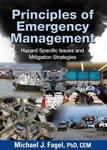All Articles
Accounting
Human Resources
Addiction Issues & Substance Abuse
Industrial Hygiene and Safety
Alcohol, Tobacco & Other Drugs
Internet Marketing
Alternative Dispute Resolution (ADR)
Investigation & Surveillance
Animals
Jails - Prisons - Correctional Facilities
Aquatics Safety
Laws & Procedures
Archaeology - Archeology
Legal Issues
Artificial Intelligence (AI) / Machine Learning (ML)
Logistics - Reverse Logistics
Blockchain Information
Manufacturing
Corrosion
Marketing
Counseling
Medical Malpractice
Criminology
Medicine
Crisis Management
Nonprofit Organizations
Discovery & Electronic Discovery
Obstetrics - Gynecology (OBGYN)
Documentation Examination & Analysis
Pain Management
Economics
Pharmacy & Pharmacology
Education & Schools
Police Practices & Procedures
Electrical - Electrocution
Pools and Spas (Recreational)
Enterprise Resource Planning (ERP)
Product Liability
Environment
Psychology
Finance
Real Estate
Foreign Affairs - Geopolitics
Securities
Forgery & Fraud
Security
Gems & Jewelry
Supply Chain Management
Hotels & Hospitality
Taxation
More...

RECREATION-SPORTS-PAGE ARTICLES MAIN PAGE
. Contact Us if you are interested in having your work published on our website and linked to your Profile(s).
All Articles
Alcohol, Tobacco & Other Drugs
Foot / Ankle Surgery
Aquatics Safety
Foreign Affairs - Geopolitics
Attorney Fees
Forgery & Fraud
Automotive - Vehicular
Gems & Jewelry
Blockchain Information
Hazardous Materials
Boating
Industrial Hygiene and Safety
Business Consulting
Injury
Chemical Industry
Insurance
Computer Forensics
Jails - Prisons - Correctional Facilities
Computers
Land Mapping - Surveying - Zoning
Corrosion
Land Use
Counseling
Logistics - Reverse Logistics
Crisis Management
Machinery
Damages
Manufacturing
Digital / Crypto Currency
Marine - Maritime
Digital Forensics
Marketing
Discovery & Electronic Discovery
Mediation
Education & Schools
Medical - Medicine
Employment
Neuropsychology
Engineering
Obstetrics - Gynecology (OBGYN)
Enterprise Resource Planning (ERP)
Oil & Gas
Ethics / Ethical Duties
Pharmacy & Pharmacology
Eyewitness Testimony
Search Engine Optimization (SEO)
Family Issues
Securities
Feng Shui
Taxation
More...
Featured Articles
There are no active articles here at this time. Please use the search bar, try another category, or contact us if you would like to contribute an article.
This Article is unavailable. Contact Us
Search articles by title, description, author etc.
Sort Featured Articles
Featured resources
Redesign The Medical Staff Model: A...
by Jon Burroughs, MD, FACHE
Career Advancement and Survival for...
by John A. Hoschette
Principles of Emergency Management:...
by Michael J. Fagel, PhD
Follow us










